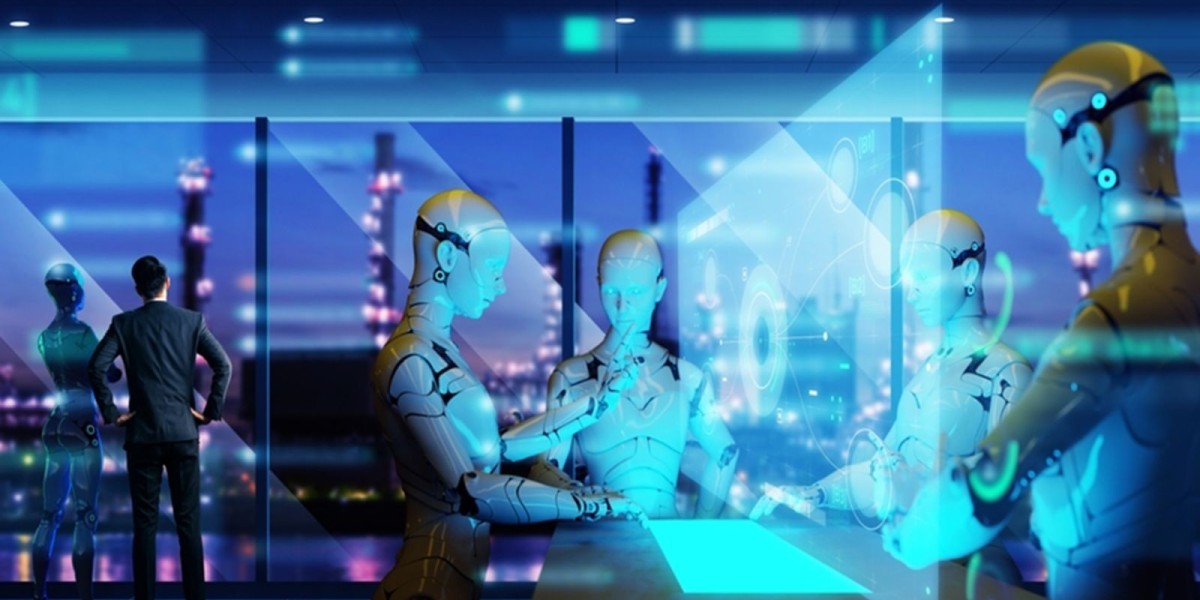Introduction
As the realms of artificial intelligence (AI) and the metaverse continue to expand, their convergence holds immense potential to reshape the way we interact with digital environments. The rapid development of AI and the metaverse is ushering in a new era of innovation, offering exciting possibilities for immersive experiences and enhanced interactions. In this blog, we will delve into the intertwined evolution of AI and metaverse development, exploring how AI is set to make a profound impact on the metaverse landscape.
The Rise of AI Development
In recent years, AI Development has emerged as a driving force behind technological advancements in various sectors. From natural language processing to computer vision, AI technologies have proven their capabilities in understanding and processing complex data patterns. This progress is now poised to be a game-changer within the metaverse, enhancing the user experience and expanding the horizons of virtual interactions.
AI in Metaverse Development
The metaverse, a virtual shared space where users can interact with a computer-generated environment and each other, is rapidly evolving. AI's integration into the metaverse can lead to dynamic changes in how these virtual worlds are constructed, populated, and experienced.
Personalized Environments: AI algorithms can analyze user preferences, behaviors, and interactions to create personalized virtual environments. Imagine stepping into a metaverse tailored to your interests, where AI understands your preferences for landscapes, architecture, and even social interactions.
Intelligent NPCs and Avatars: Non-playable characters (NPCs) and avatars are crucial elements of the metaverse. AI-driven NPCs can exhibit more realistic behaviors and adapt to user interactions, enabling richer and more immersive storytelling within virtual worlds.
Real-time Content Generation: AI can dynamically generate virtual landscapes, objects, and structures, reducing the need for extensive manual design. This could accelerate the creation of diverse metaverse environments and foster user-driven content creation.
Enhanced Interactions and Social Dynamics
The metaverse thrives on social interactions and connections, and AI has the potential to amplify these aspects.
Natural Language Processing: AI-powered chatbots and virtual assistants can facilitate more natural conversations within the metaverse. Users can engage in real-time discussions with NPCs or fellow users, enhancing the social aspect of virtual spaces.
Emotion Recognition: AI can analyze users' facial expressions and voice tones to detect emotions, enabling avatars to respond empathetically. This could lead to more authentic virtual social interactions.
Social Network Analysis: AI algorithms can map and analyze social connections within the metaverse, offering insights into user behavior, preferences, and trends. This data can then be used to enhance user experiences and design more engaging virtual communities.
Challenges and Considerations
While the synergy between metaverse and AI Development offers exciting prospects, it also presents challenges that need careful consideration.
Ethical Concerns: AI-powered NPCs might blur the lines between reality and virtuality, raising ethical questions about consent, privacy, and the potential impact on mental well-being.
Data Security: As AI processes vast amounts of user data, ensuring data security and preventing unauthorized access becomes critical priorities.
Bias and Fairness: AI algorithms can inadvertently perpetuate biases present in training data, leading to unfair or discriminatory outcomes within the metaverse. Striving for fairness and inclusivity is essential.
The Future Landscape
The convergence of AI and metaverse development heralds a future of boundless creativity and unprecedented interactions.
Dynamic Evolution: AI's adaptability will enable the metaverse to evolve and respond to user demands in real-time, creating a continuously changing digital ecosystem.
Virtual Economies: AI-driven virtual economies can simulate market dynamics, resource allocation, and scarcity within the metaverse, adding layers of complexity to user experiences.
Hybrid Realities: AI-powered metaverse interactions could spill over into our physical world, blurring the boundaries between the virtual and real realms. Augmented reality (AR) and mixed reality (MR) experiences could become seamlessly integrated.
Conclusion
The trajectory of metaverse and AI Development is one of innovation, challenges, and transformative potential. As AI technologies mature and the metaverse landscape expands, their convergence promises to shape a future where virtual experiences are richer, interactions are more meaningful, and the boundaries between the digital and physical worlds become increasingly fluid. By navigating the ethical considerations and technical challenges, we can unlock the full capabilities of AI within the metaverse and pave the way for a new era of human interaction and creativity.
 " class="wow_main_float_head_img">
" class="wow_main_float_head_img">






